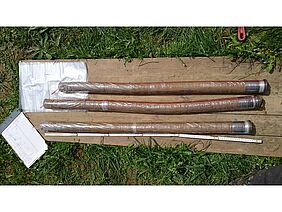In the SOCORT project, we sampled nine field trials across Europe and assessed the impact of reduced tillage versus ploughing on soil carbon storage. We found that humus was always enriched in the soil surface layer in reduced tillage systems, which is essential to protect soils from erosion and helps rain infiltrate faster. However, humus stocks decreased at most sites in the old plough layer and below (ca. 15-50 cm). Summing up, some sites showed an overall gain in humus, some not. The average annual relative C storage increase was 90 kg per ha, in the depth of 0 to 50 centimetres. Combining reduced tillage with organic farming practices is thus a valuable tool to care for our soils with the potential to sequester carbon at selected sites and an excellent opportunity to adapt to actual and expected climate changes! More details can be found in the recently published paper "Reduced tillage in organic farming affects soil organic carbon stocks in temperate Europe" in the journal Soil & Tillage Research.
Further information
Contact
Links
- sciencedirect.com: Paper "Reduced tillage in organic farming affects soil organic carbon stocks in temperate Europe"
- fibl.org: Project SOCORT in the FiBL project database





![[Translate to Englisch:] Drei Menschen auf einem Feld nehmen Bodenproben.](/fileadmin/_processed_/3/e/csm_SOCORT_Aesch2_MaikeKrauss_52a3f541a9.jpg)